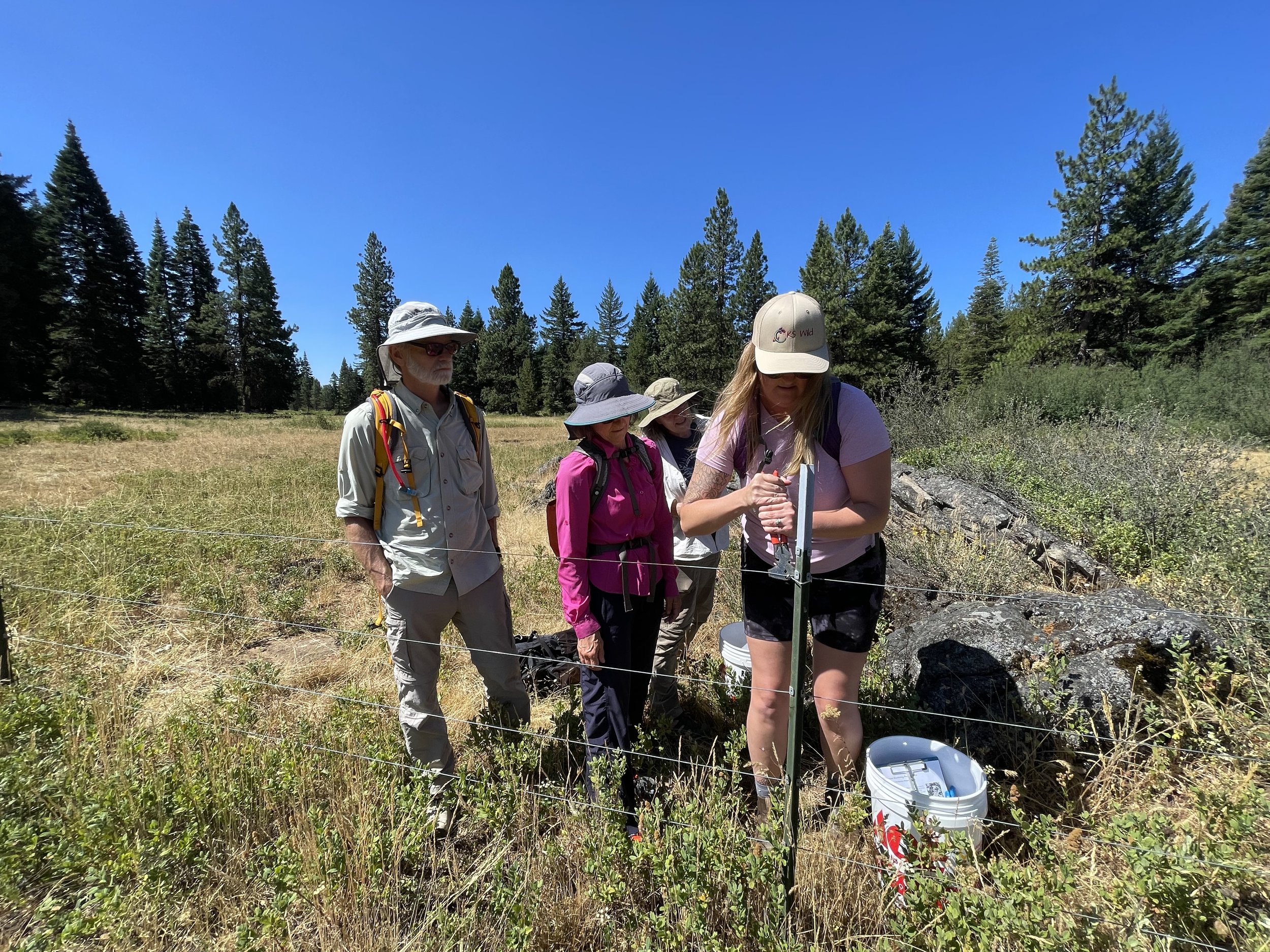Mardon Skipper
Mardon skipper on a fingertip. Credit: John Villella
The Mardon Skipper (Polites mardon) is a small butterfly about the size of your fingertip that belonging to the skipper family, Hesperiidae, known for its distinctive appearance and specialized habitat requirements. Its species survival is imperiled due to its localized distribution only in the Klamath Mountains and meadow habitat degradation. Endemic to the Klamath-Siskiyou bioregion of southern Oregon and northern California, particularly found in wetlands and coastal meadows, this butterfly has faced significant population declines due to habitat loss and fragmentation. The Cascade-Siskiyou National mOnument has long been one of the butterfly’s few refuges.
Physical Description
The Mardon Skipper exhibits a wingspan of approximately 2.5 to 3.0 centimeters. Its upper wings are a vibrant orange with black markings, while the undersides are typically lighter in color with subtle patterns. This species displays sexual dimorphism, with females often having broader wings compared to males.
Habitat and Distribution
This butterfly is primarily found in damp meadows, wetlands, and grassy coastal areas along the western regions of North America, ranging from northern California through Oregon. Its habitat specificity makes it vulnerable to disturbances such as urban development, agriculture and grazing, and climate change impacts.
KS Wild volunteers working to repair an exclosure fence around the Mardon skipper’s habitat in the Cascade-Siskiyou National Monument, 2024. Credit: Haleigh Martin
Life Cycle and Behavior
The life cycle of the Mardon Skipper includes four stages: egg, larva (caterpillar), pupa (chrysalis), and adult butterfly. Females lay eggs on specific host plants, usually grasses such as sedges (Carex species). The larvae feed on these plants during their growth phase, developing through several instars before pupating. Adults emerge in late spring to early summer, where they actively feed on nectar and play a crucial role in pollination within their habitat.
Conservation Status
The Mardon skipper has been state-listed as endangered since 1998 and was a federal candidate for Endangered Species Act listing from 1999-2012. Habitat loss due to urbanization, agriculture, and invasive plant species has significantly reduced suitable breeding and feeding grounds. Furthermore, its limited range and specific habitat requirements make it highly vulnerable to habitat fragmentation and climate change effects, which alter local environmental conditions.
In its critical habitat range of the Cascade-Siskiyou National Monument where KS Wild and partners have worked for years to steward their habitat, grazing cattle eating and compressing the native grasses that the butterfly needs to survive continues to be the number one threat to the Mardon skipper survival.
Conservation Efforts
Fence repair in the Cascade-Siskiyou National Monument, 2024. Credit: Haleigh Martin
KS Wild’s efforts to conserve the Mardon skipper include habitat restoration projects focused on preserving and restoring native grasslands and wetlands. We have partnered with Vesper Meadow and Friends of the Cascade-Siskiyou National Monument to write grants and upkeep a fence exclosure that protects the Mardon skipper’s habitat within the CSNM from grazing cattle.
The imperiled status of the Mardon Skipper underscores the importance of proactive conservation measures to protect its specialized habitat and ensure the survival of this unique butterfly species. By addressing habitat loss, implementing sustainable land management practices, and raising awareness about its ecological significance, we can work towards securing a future where the Mardon skipper continues to contribute to the biodiversity and beauty of the Klamath-Siskiyou.



